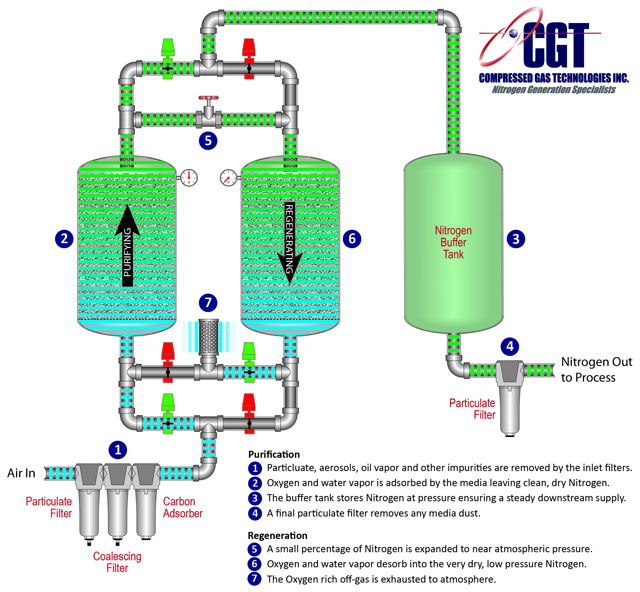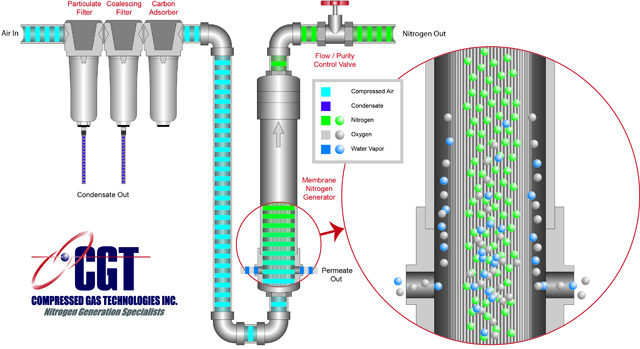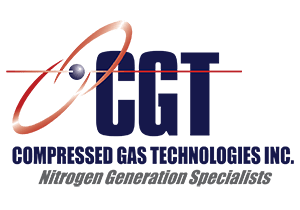
Nitrogen Generators How It Works
IS NITROGEN GENERATION RIGHT FOR ME?

A Quick 10-minute phone conversation with one of our nitrogen generation specialists will typically provide us with enough information so we can recommend the best nitrogen solution for your company. Whether it is nitrogen generation; continuing with your current nitrogen supply; or using an alternative nitrogen supply mode.
Why spend hours researching the internet when you can get all of your questions answered in a 10 minute phone call.
Call: 1-877-737-7760 or

How PSA Nitrogen Generators Work
CGT PSA Nitrogen Generators operate on the Pressure Swing Adsorption (PSA) principle to produce a continuous stream of nitrogen gas from compressed air. Two towers are filled with carbon molecular sieve (CMS). Pretreated compressed air enters the bottom of the on-line tower and follows up through the CMS. Oxygen and other trace gasses are preferentially adsorbed by the CMS, allowing nitrogen to pass through. After a pre-set time, the on-line tower automatically switches to regenerative mode, venting contaminants from the CMS. Carbon molecular sieve differs from ordinary activated carbons in that it has a much narrower range of pore openings. This allows small molecules such as oxygen to penetrate the pores and be separated from nitrogen molecules which are too large to enter the CMS. The larger molecules of nitrogen by-pass the CMS and emerge as the product gas.
How Membrane Nitrogen Generators Work
Atmospheric air contains essentially 78% nitrogen and 21% oxygen. Ordinary dry compressed air is filtered and passed through a technically advanced bundle of hollow membrane fibers where nitrogen is separated from the feed air by selective permeation. Water vapor and oxygen rapidly permeate safely to the atmosphere, while the nitrogen gas is discharged under pressure into the distribution system. Pressure, flow rate and membrane size/quantity are the main variables that affect nitrogen production. Nitrogen purity (oxygen content) is controlled by throttling the outlet from the membrane bundle(s). At a given pressure and membrane size, increasing the nitrogen flow allows more oxygen to remain in the gas stream, lowering nitrogen purity. Conversely, decreasing nitrogen flow increases purity. For a particular purity, higher air pressure to the membrane gives a higher nitrogen flow rate. Purity ranges of less than 90% to 99.9% are possible. By combining multiple membrane bundles, an infinite number of flow/purity ranges are available to satisfy practically any application that requires nitrogen gas.


